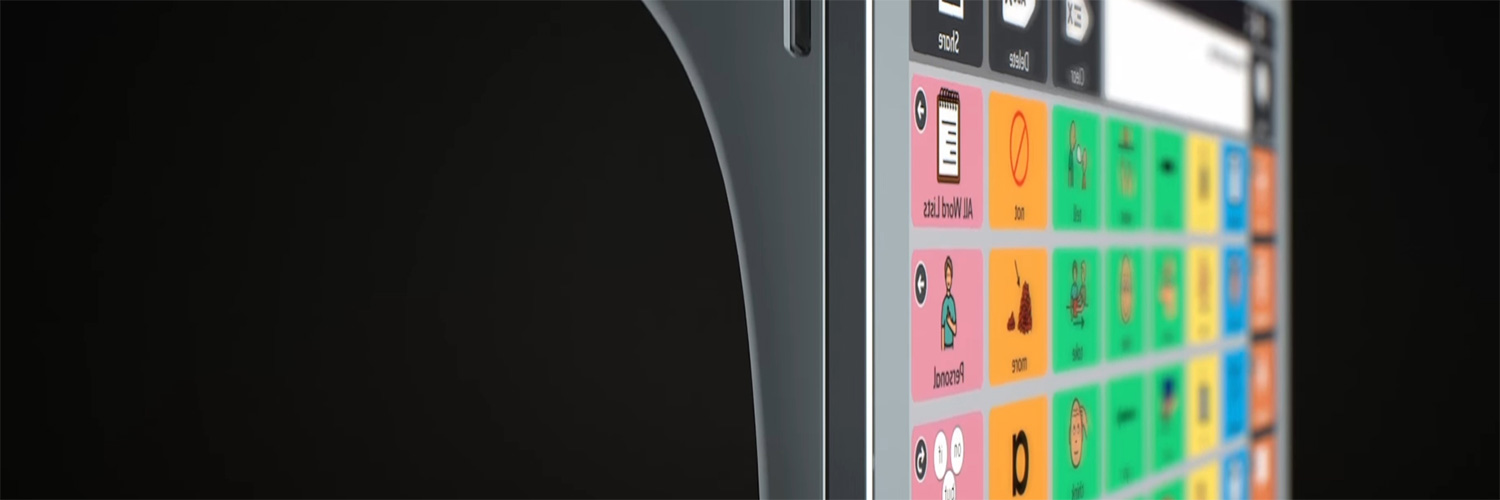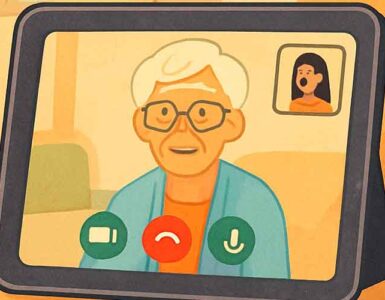Autism Spectrum Disorder (ASD) describes a broad range of conditions most commonly identified as challenges with speech, nonverbal communication, social skills, plus other issues, such as repetitive behavior. The challenges to the development of the child with ASD can vary widely depending upon the individual. Assistive technology for autism can help.
Assistive technology can provide useful tools to help the individual with ASD. These tools run the gamut from simple hands-on objects to more complex technology, but all perform a vital role in helping to address the many issues related to communication, social skills, behavior, and self-care that are part of the condition.
Communication is a fundamental issue with ASD. How can assistive technology for autism help?
The range of communication issues that may present with ASD are many and can present major difficulties in the development of the child. Children with ASD will typically have difficulties with expressing themselves through spoken and written language — in severe cases not speaking at all — and failing to understand spoken language, even if there are no underlying hearing problems. This can be compounded by motor control issues that make the physical act of speaking difficult.
Despite these problems, it’s incorrect to assume nonspeaking children with ASD cannot communicate or speak. An array of approaches has emerged to facilitate communication and aid the autistic child in developing communication skills. Let’s explore these approaches and the assistive technology devices that support them.
Alternative and Augmentative Communication (AAC) systems
Experts agree that the sooner children with ASD are exposed to effective communication systems the more positive the effect will be on their future development and learning. The early years are vital to a child’s development, and the sooner assistive technology in the form of AAC systems are introduced the more chance there is for a positive outcome.
An array of approaches can be categorized under the umbrella of AAC systems. The two primary types of assistive technology employed for AAC can be broken down into two categories:
- Picture Exchange Communication Systems (PECS): PECS utilizes collections of image cards representing different activities, things, feelings, and more. PECS is a commonly used intervention method for developing communication skills for those with ASD.
- Speech Generating Devices (SPG): SPGs cover a variety of devices and software that create speech from either written inputs or icons. Speech can either be created from recorded human samples or purely synthesized. Depending on the complexity of the device, they can store short simple messages or lengthy communications. Through the use of these devices, those with speech and communication limitations can learn to communicate effectively with those around them without the frustrations of mastering speech. Past attitudes that using these devices early in childhood development would inhibit speech development have been largely discarded, and their use is becoming more widespread because of advances in technology and decreasing costs.
Resources for developing communication skills with PECS
PECS was developed in the 1980s to assist in developing independent communication with pre-school students diagnosed with autism. Based upon teaching protocols put forth by B. F. Skinner, PECS is a low-tech system that utilizes pictures, cards, and charts to develop and promote communication skills in a systematic fashion. You can learn more about the theory and application of PECS with this guide.
Here are some useful PECS kits, each one designed around a single teaching and communication focus:
- Picture Communication Starter Kit: This 400-card communication set is a useful starter for beginning a PECS practice. A variety of communication topics are covered, including people, action words, food, clothes, common needs, and much more. Vinyl pocket pages allow cards to be organized to create and customize communication systems.
- Let’s Talk About Emotions: Building emotional awareness and regulation skills can be a challenge for the child with ASD. This kit concentrates on helping the autistic child identify and express emotions with the use of emotion icon cards and a chart representing the degree of emotion.
- I Can Do It! My Daily Checklist: Building routines and keeping track of responsibilities is an important part of teaching the autistic child how to develop independence. This kit employs a laminated chart and a number of plastic activity squares so that a variety of daily activities can be presented and reinforced to the child with ASD.
- Visual Essentials Software: This software package provides the user with an opportunity to expand the range of cards and tools available to them. It contains over 3500 different photos, plus a variety of charts and boards that can be adapted to different situations.
Speech Generating Devices (SGDs) and ASD
SGDs can provide an important tool in allowing the person with ASD to more effectively communicate. They utilize synthesized or digitized human voices, relying upon input from keyboards or touchscreens. SGDs are not as widespread in their adoption as PECS as AAC options, but the advent of inexpensive and capable devices and apps are rapidly changing the landscape of assistive technology for autism.
Here are some popular and useful SGD options for the person with ASD.
- Quick Talker 23: QuickTalker 23 is a portable, purpose-built SGD that lets a child with ASD create sentences by touching icons to string together words. Over 20 sentences with a total time of 20 minutes can be created. There are five different levels, based on differing skill and comprehension levels.
- CoreVoice: CoreVoice can make any phone or tablet an SGD. It was designed by a speech pathologist to assist a variety of speech needs and the screen-based format allows an impressive amount of flexibility in set up and adaptation for individuals across the ASD spectrum. There are nine pre-made boards built into the app, plus one that can be customized for your particular needs.
- Tobii Dynavox Indi with Snap + Core First: Indi is another purpose-built portable SGD that utilizes symbol-based software, Snap + Core First. Indi won an Innovation award at CES2018, and it features several different voices, plus extra features like access to social media and email. A range of compatible inputs supports devices like add-on switches, head-mouse, and more.
- Tobii Dynavox I-110: I-110 is a rugged, keyboard-based SGD. It’s IP54-rated for water and dust protection so it’s suitable for use in a variety of environmental conditions.
Other Assistive Technology to support children with ASD
There is no single approach to working with a child with ASD. A collaborative approach among all those responsible for the child’s learning and formal education is the best way to proceed. Likewise, there’s no single approach to assistive technology or one particular set of devices that is right for each person.
In addition to the main categories of assistive tech we’ve concentrated on, there are numerous other assistive tools available.
- Portable Word Processors: These feature full-size keyboards with small LCD or LED screens. They’re small and lightweight and useful for children with ASD whose lack of fine motor control makes writing by hand difficult. Alphasmart Neo is a popular choice in this category.
- Talking Word Processors: These software programs provide speech feedback, allowing the child with ASD to hear what they’ve written. This provides a vital feedback loop to improve comprehension and organization skills. The Talking Word Processor from EnableMart is an excellent example of this tool.
- Assistive Listening Systems (ALD): Autism impacts how a child processes sound, creating obstacles to learning and socialization. Assistive listening devices can help children with ASD hear more clearly. This guide presents many different options to consider when beginning the search for an ALD.
- Visual Supports and Organizers: Visual supports use pictures or graphics to communicate with ASD affected children who have trouble communicating through writing. They’re an invaluable way for parents to communicate better with their child, and for the child to learn to communicate better with others. This guide provides an excellent starting point for creating and implementing visual organizers.
As we’ve seen, the majority of assistive technology for autism — whether simple or more advanced — is tied to developing effective means of communication with those who have ASD. Within each category of items, there are many options to choose from, and those who work in the field will attest to the fact that there are no easy answers or one-size-fits-all solutions. As we’ve seen with the increase of the use of speech-generating devices, it’s certain that the technology underlying assistive technology for autism will continue to evolve and improve.
Featured Image Credit: Screenshot from Tobii Dynavox YouTube video.






























Add comment